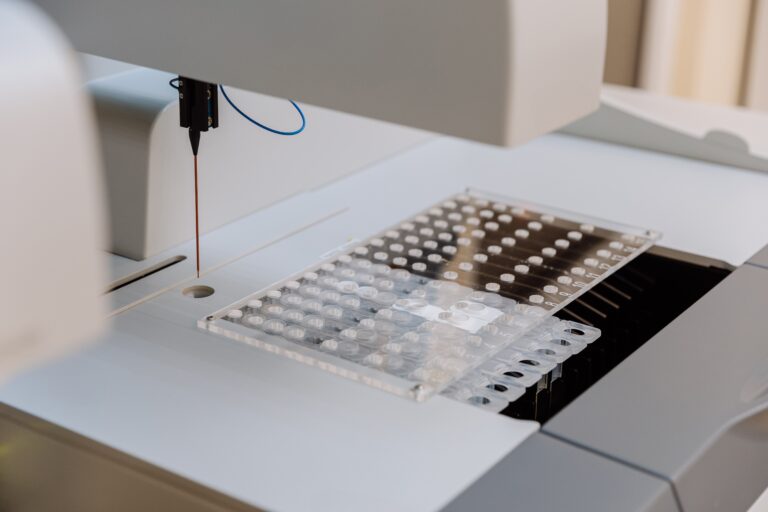Platomics announces new collaborations Read the Press Releases

An annotated rundown of IVDR requirements for labs
2024 brings a new set of challenges
The IVDR was written primarily with IVD manufacturers in mind, but notably Article 5.5 also makes demands on in-house diagnostic tests developed by labs. And 2024 will bring another round of IVDR rollout for labs.
Before you fill your lab calendar for the new year, here’s an annotated review of what the IVDR has set out for labs to do—and by when it needs doing.
As of May 2022:
Labs may not transfer in-house devices to another entity.
This means you may not for example “borrow” a bioinformatics pipeline created by another lab, nor lend out or sell your homemade analysis software.
One potentially tricky aspect here is that lab groups need to clarify their legal entities—a concept that differs in each country. Try checking with your national competent authority to see if they have clarified the meaning of “legal entity.”
Labs may not “manufacture” diagnostic tests on an industrial scale.
The meaning of this seems obvious for most labs despite the lack of an IVDR definition for “industrial scale.” The purpose here is to hinder loopholes around the obligation to CE-mark devices produced at scale.
The MDCG has issued the following guidance: Industrial scale is not synonymous with “mass-produced” and does not rule out a high number of a given diagnostic test within one lab. The general rule: your lab should not produce more than you would use to fulfil the projected needs of the patients at your health institution.
Labs must ensure that each in-house test fulfills Annex I of the IVDR, which entails the General Safety and Performance Requirements (GSPRs).
The GSPRs represent the meat of the IVDR and this requirement has been in full force since May 2022. All IVDs—whether industrially manufactured or lab-developed—must meet the nearly 200 requirements and sub-requirements. Responsibility for the implementation and documentation of in-house devices lies with the laboratory.
This applies also to CE-marked products used in your lab if you modify their use from that intended by the manufacturer, as well as to your in-house developed workflows with multiple components and steps.
GSPRs are typically documented with a GSPR checklist for each in-house device, whereby there are different strategies available to labs regarding how to group in-house devices.
Starting May 2024 labs must also:
Implement a quality management system “appropriate” for the manufacture and use of in-house devices, and additionally fulfill ISO 15189 or a similar standard accepted by their national competent authority.
The IVDR requires labs to implement a quality management system that can jump through two hoops at once.
On the one hand, this system must fulfill the lab quality requirements of ISO 15189 or a similar nationally accepted framework. ISO 15189 accreditation is a reliable way to demonstrate conformity and therefore expected in many EU countries.
On the other hand, processes specific to in-house manufacturing must also be considered—an aspect not necessarily covered by ISO 15189. This manufacturing aspect must therefore be supplemented on top of the standard lab quality requirements. Perhaps the easiest route is to create procedures based on development processes from ISO 13485, which specifies QMS requirements for medical device manufacturers.
The take-home message here is that ISO 15189 is not enough now that labs are considered the quasi-manufacturer of their in-house devices.
Provide authorities with information and a rationale on the manufacture, modification and use of in-house devices.
In other words: You need to justify why you have developed and use a given in-house test.
File extensive technical documentation on the design, manufacture and performance of high-risk class D devices.
National competent authorities may extend this to other risk classes as well. Switzerland has already enshrined this in national law for all risk classes, and Germany is on track to require it for class B and higher. Other countries are expected to follow suit.
Collect and review experiences from clinical use and undertake corrective action as necessary.
Labs are newly required to monitor clinical use of their lab-developed tests and apply corrective action when necessary.
This is the lab corollary of manufacturers’ obligation under IVDR to perform post-market surveillance. Note that this new IVDR demand on manufacturers means that they will likely expect labs to set up procedures for reporting back to them regarding clinical use of their products.
The final hurdle starting in 2028
Labs must justify how patients’ needs are better met with an in-house test over a comparable CE-IVD-marked device on the market.
This is perhaps the most contentious single aspect of the entire regulation. The idea boils down to this: In the future labs may only use in-house tests if they monitor the market and do not find an “equivalent” CE-marked assay to fulfil target patient needs.
But the idea of “equivalence” is not easy to interpret. According to the MDCG, “non-equivalence” can be based on technical, biological or clinical aspects, including for example differences in intended purpose, clinical conditions, patient groups, critical technical specifications or performance characteristics.
For more information regarding the points raised here, see MDCG 2023-1.
Now take a few deep breaths before it’s time to ring in the New Year!
* Disclaimer: We have compiled the above information to the best of our knowledge, yet our blog entries do not constitute expert advice and cannot substitute your own examination of the legal situation applicable to you and your institution.




